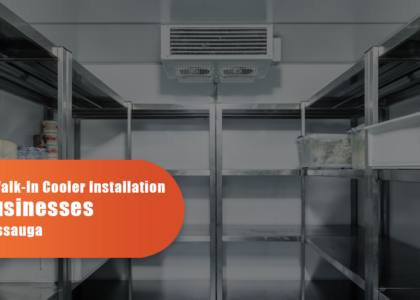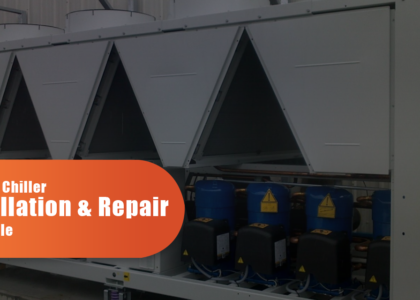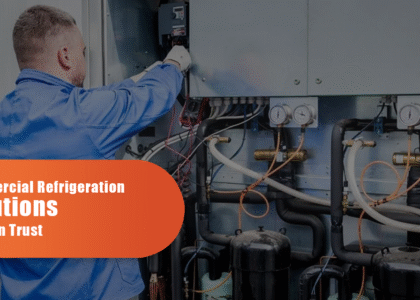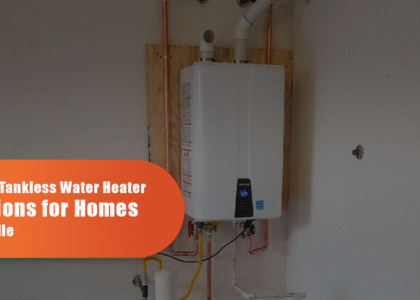Radiant Heat And Forced Air are two common choices for house heating systems. Every system has advantages and disadvantages. Knowing these lets you choose the best option for your house. In this article, we will compare these two heating techniques to assist you in selecting the one that best suits your requirements. Sentral HVAC is available to help you install radiant heat and Air.
What is Forced Air Heating?
One of the most widely used heating techniques is forced air heating. Air is heated in a furnace and forced into rooms through vents and ducts. The warm air moves around and raises the temperature inside your home.
Pros of Forced Air
-
Rapid Heating
Forced air systems swiftly heat a room. The air quickly warms the room since it blows straight into it. This is perfect for those who require immediate warming, particularly in chilly climates.
-
Simple to Install
Compared to other heating options, Air systems can be installed more quickly and for less money. Many homes already have vents and ductwork, which makes the process simpler.
-
Filtration of Forced Air
One of forced air systems’ primary advantages is their ability to filter the air. Many Air systems have filters that may eliminate dust, allergies, and pollutants. They improve indoor air quality.
-
Cool Air in Summer
An air conditioner can also be operated using a forced air system. Connecting a cooling unit to the same ducts allows your home to be heated and cooled, making it a practical choice throughout the year.
-
Flexibility and Control
A thermostat makes it simple to regulate the temperature. Some more sophisticated models even provide zoning, which enables you to set the temperature in different parts of your house.
Cons of Forced Air Heating
-
Dry Air
Forced air systems commonly dry out the air in your house. This can cause dry skin and itchy sinuses, which can be uncomfortable during winter.
-
Noise
Forced air systems can be noisy when the furnace starts up. This sound might annoy some people, particularly at night when they try to fall asleep.
-
Uneven Heating
Forced air can provide inconsistent temperatures even if it heats rooms quickly. Due to uneven air movement via the ducts, some rooms could be warmer than others.
-
Maintenance
Air systems require regular maintenance, including filter replacements and duct cleaning. If the system malfunctions, repairs may be costly.
What is Radiant Heat?
On the other hand, radiant heat heats your home’s ceiling, walls, or floors. The room then becomes warmer as the heat radiates outward. There are two types: electric radiant heat and hydronic radiant heat (which uses hot water). Usually, radiant heating systems are installed in the ceiling or beneath the floor.
Pros of Radiant Heat
-
Comfortable, Even Heat
Radiant heat provides a comfortable temperature. Unlike forced air, it does not produce hot and cold areas, and the warmth is equally distributed throughout the room.
-
No Air Movement
Radiant heat eliminates the need to blow air, allowing you to avoid dust and allergens. This makes it an excellent choice for those who suffer from allergies or asthma.
-
Silent Operation
Systems that use radiant heating are silent. For people who prefer a calmer home environment, the fact that they do not produce noise like forced air systems can be an enormous benefit.
-
Energy Efficiency
Systems that use forced air may not always use as much energy as radiant heat. However, forced air eliminates the need to heat the air initially by immediately heating the items and people in the room, which can lead to lower energy bills.
-
No Dry Air
The air in your house does not get dry since radiant heat does not require air to be circulated. This may be helpful for those who suffer from dry skin or sensitive sinuses throughout the winter.
Cons of Radiant Heat
-
Slow Heating
Compared to Air, radiant heat takes longer to warm a space. The wall or floor may take a while to reach the right temperature.
-
Higher Installation Costs
The cost of installing a radiant heating system may be higher. It is also more complicated if you add it to an existing house. However, installing it during a home’s development or reconstruction is frequently more straightforward and less expensive.
-
Difficult to Upgrade
It’s more challenging to add radiant heating to a home that doesn’t already have it. Upgrading requires tearing down ceilings or floors, which can be expensive and disruptive.
-
Limited Cooling Options
In contrast to forced air systems, radiant heat offers no cooling choices. You must build a separate air conditioning system to cool your house in the summer.
-
Complexity of Maintenance
Repairs might be challenging, even though radiant heat requires less frequent maintenance than Air. If something goes wrong, ripping down walls or floors may be necessary to fix it.
Final Thoughts
Both Radiant Heat And Forced Air have benefits. Air can be your best option if you need fast, customizable heating and want the option of cooling. However, radiant heat might be a fantastic choice for more uniform, silent, and cozy heating. The best option ultimately depends on your heating requirements, home, and financial situation. Sentral HVAC can assist you in selecting the system that best suits your needs.
Contact Sentral HVAC instantly if you need HVAC installation or repair services.





